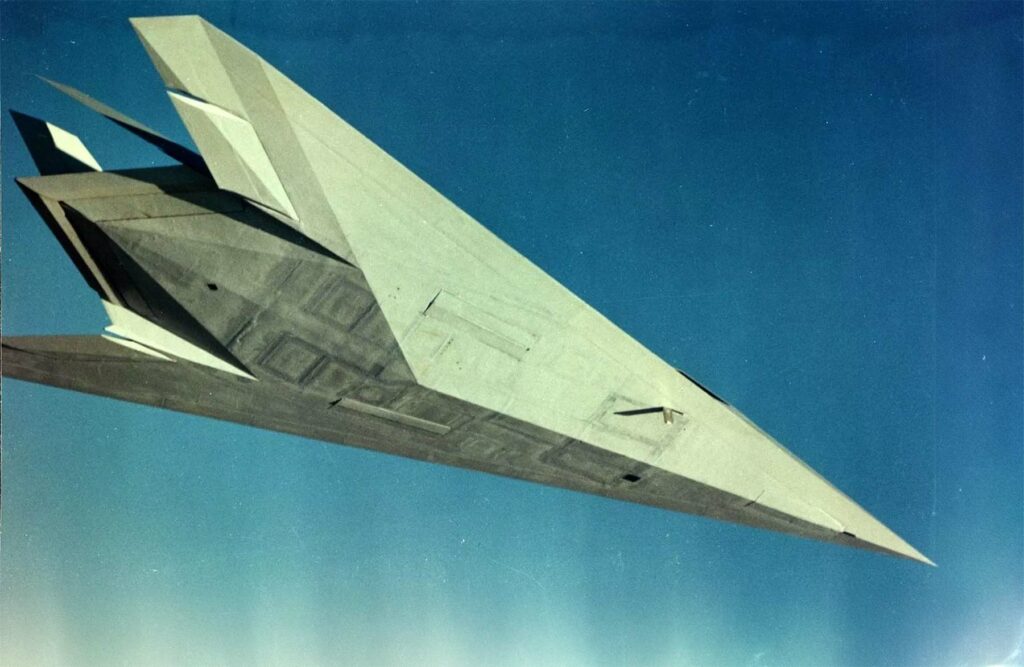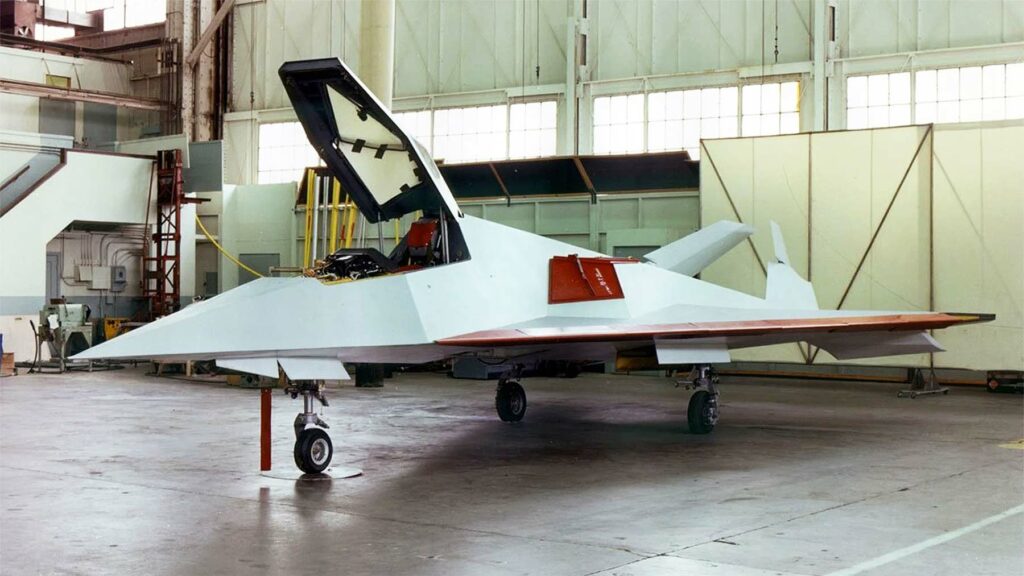Lockheed Have Blue: Prototype stealth aircraft, precursor to the F-117 Nighthawk.
In brief
Lockheed Have Blue was the code name for the experimental stealth aircraft that led to the development of the first operational stealth aircraft, the F-117 Nighthawk. Its design focused on minimizing radar cross-section (RCS) and testing the viability of stealth technology in combat aircraft. Powered by two General Electric J85-GE-4A turbojet engines, Have Blue featured a faceted airframe design to deflect radar signals, making it less detectable. First flown in 1977, it demonstrated the practical application of stealth technology, although it faced challenges such as instability and high crash risks due to its pioneering design.

History of the Development of the Lockheed Have Blue
During the Cold War, the increasing effectiveness of Soviet radar and air defense systems prompted the United States to explore new technologies to enhance aircraft survivability. In this context, the concept of a stealth aircraft, which could evade detection by enemy radar, became a strategic imperative for the U.S. Department of Defense.
The Lockheed Have Blue program originated from this need. Initiated in the early 1970s under the auspices of the Defense Advanced Research Projects Agency (DARPA), the program aimed to develop a technology demonstrator that would prove the feasibility of a radar-evading aircraft. Lockheed’s Skunk Works division, led by the legendary aeronautical engineer Clarence “Kelly” Johnson and later by Ben Rich, was selected to develop what would become the first stealth aircraft.
The program was highly classified, but it was part of a broader initiative known as Project Harvey, which focused on low observability aircraft designs. Lockheed was awarded the contract to build two prototype aircraft, famously known as Have Blue, in 1976. The first of these made its maiden flight on December 1, 1977, marking a significant milestone in aviation history.
Design of the Lockheed Have Blue
The design of Have Blue was revolutionary, employing a shape optimized to scatter radar waves away from the source rather than back to it, a concept derived from the work of Soviet physicist Pyotr Ufimtsev, which Lockheed engineers had expanded upon. The aircraft’s angular, faceted design was critical to reducing its radar cross-section and was a precursor to the more sophisticated stealth designs that followed.
Measuring about 47 feet in length and with a wingspan of 22 feet, Have Blue was relatively compact. It incorporated materials and coatings designed to absorb radar waves, further enhancing its stealth capabilities. The aircraft was equipped with two General Electric J85-GE-4A engines, which provided enough thrust for subsonic flights without afterburners, reducing infrared emissions.
However, the focus on stealth came with drawbacks. The design resulted in an aircraft that was aerodynamically unstable. This instability required the development of a sophisticated fly-by-wire (FBW) control system to maintain flight control. The complexity of this system, combined with the aircraft’s untested design principles, led to significant challenges during testing.
Performance of the Lockheed Have Blue
In terms of performance, Have Blue tested the limits of what was possible with 1970s technology. The aircraft successfully demonstrated that it could evade radar detection effectively, validating the stealth concept. However, it never reached operational deployment. Its top speed was approximately 600 miles per hour, and it operated at a range typically less than 1,000 miles due to its limited fuel capacity and the high fuel consumption of its engines.
The performance of Have Blue was primarily benchmarked against its stealth capabilities rather than traditional performance metrics like speed or agility. In comparison to non-stealth aircraft, Have Blue sacrificed performance for low observability, which was its primary design goal.
Variants of the Lockheed Have Blue
The Have Blue program produced two prototypes, referred to simply as Have Blue 1 and Have Blue 2. These aircraft were identical in their mission to prove the stealth technology but differed slightly in their configuration and flight testing roles, with the second prototype incorporating minor modifications based on the flight data from the first.

Military Use and Combat of the Lockheed Have Blue
The Lockheed Have Blue prototypes were never intended for combat deployment. Their purpose was solely to validate the stealth technology concepts that would be utilized in future operational aircraft. Both prototypes were lost in accidents during testing, which, while demonstrating the high risk of pioneering stealth technology, provided invaluable data that shaped the development of the F-117 Nighthawk, the world’s first operational stealth aircraft.
The Lockheed Have Blue was a critical step in the evolution of stealth aircraft technology. Despite its short lifespan and the loss of both prototypes, the program demonstrated the practicality and effectiveness of stealth technology, profoundly influencing future aircraft designs and changing the course of aerial warfare and defense strategy. The legacy of Have Blue continues to resonate in all stealth technology applications in modern military aviation.
Back to the experimental aircraft section.